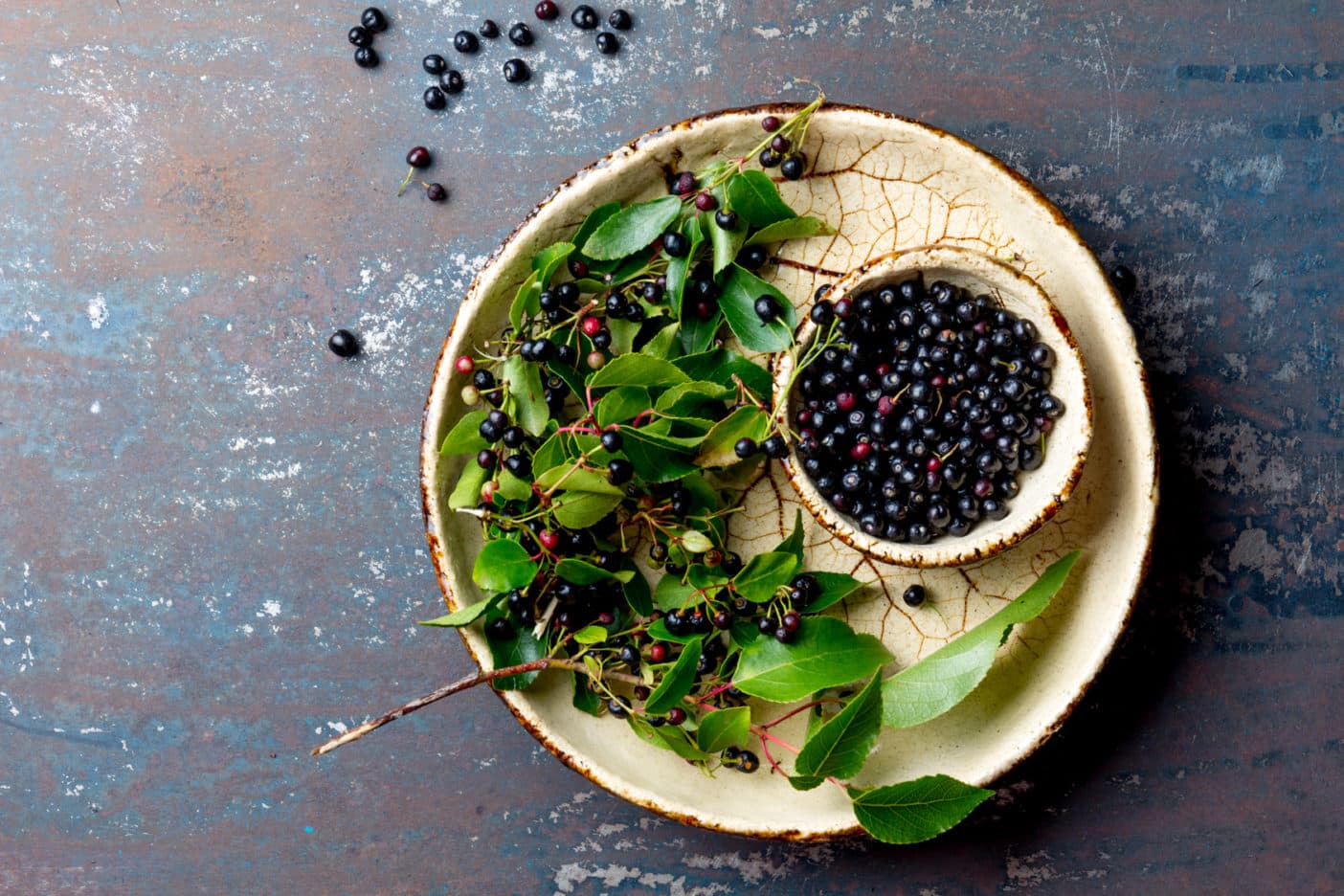Maqui berry

The maqui berry bears the botanical name Aristotelia chilensis. It indicates its origin: it grows in the temperate tropical rainforests on the border between Chile and Argentina. In the preliminary stage, small yellow-green flowers grow on bushes or small trees up to 5 metres high. These flowers then turn into the blue-black and edible berries, which are very similar to our native blueberries. The antioxidant effect of maqui berries, which is very beneficial to health, has been appreciated for centuries. That is why people have long taken the trouble to harvest them from the tall trees and bushes.
Maqui berry – a long historie
The Mapuche Indians, natives of the Patagonia region, have integrated this miracle berry into their medicine. The European naturalist Claude Gay discovered it in 1844: he attributed an unusual strength and healing effect to the juice of the maqui berry, which the Indians prepared. Nevertheless, it is still relatively unknown in Germany compared to the more well-known acai berries or goji. However, if you compare the active ingredients and achievable effects, the maqui berry leaves the other berries behind.
The freshly picked fruits of the maqui tree taste very palatable. However, storage after harvesting is hardly possible. The berries are therefore freshly pressed and bottled as juice. An alternative is the dried form of the maqui berries: These can be added to muesli, yoghurt, or other desserts. They are also popular as a snack between meals. As their invigorating effect is legendary, the dried form of the maqui berry is also available as a powder and in capsules. It can also be used to make homemade jams, jellies, and cakes, and is delicious and beneficial to health.
Usage of maqui berry
The special thing about the maqui berry is its high antioxidant content. These substances are valued for protecting health, as they intercept the so-called free radicals that cause cell damage. It is said that this damage can even be reversed thanks to the highest proportion of antioxidants of all known berries. Anti-ageing is the keyword often used today for this aspect of the use of maqui berries.
Many ailments can be positively influenced, such as inflammatory processes in the tissue and musculoskeletal system, as well as heart problems and skin diseases. The immune defence is strengthened, the maqui berry is a source of energy and can be used as a dietary supplement to reduce weight. Its external use as a very beneficial ingredient in cosmetics has not yet been fully explored; more on this at the end of this article.
Valuable ingredients of the maqui berry
In addition to the antioxidants mentioned above, the maqui berry contains other valuable substances such as provitamin A and vitamins C and D. The analysis also revealed anthocyanin, delphinidin, malvidin, petunidin and triterpene as well as coumarin, flavonoids and cyanides.
The minerals iron, calcium, and potassium, which are present in comparatively high proportions, are also important. These valuable ingredients can be used in finished cosmetics to provide the skin with valuable components. You can recognise products with this superfood berry by its INCI name: Aristotelia Chilensis Fruit Extract.
The maqui berry is safe to consume. The berries processed in powder form have not yet been sufficiently researched. Confirmation of the outlined and assumed possible effects is therefore still pending.
Maqui berry – still very exotic
The potential qualities of the maqui berry are obvious. They energise and are good for your health. They also make you beautiful on the inside.
Like the acai berry, the maqui berry can also be used for cosmetics.
Cosmacon can develop great products with maqui berries for your brand – just ask us.
Literature:
Watson RR, Schönlau F.Minerva Cardioangiol. 2015 Apr;63(2 Suppl 1):1-12.
Effects of drying processes on composition, microstructure and health aspects from maqui berries.
Quispe-Fuentes I, Vega-Gálvez A, Aranda M, Poblete J, Pasten A, Bilbao-Sainz C, Wood D, McHugh T, Delporte C.J Food Sci Technol. 2020 Jun;57(6):2241-2250. doi: 10.1007/s13197-020-04260-5. Epub 2020 Jan 24.
Yamashita SI, Suzuki N, Yamamoto K, Iio SI, Yamada T.J Tradit Complement Med. 2018 Nov 22;9(3):172-178. doi: 10.1016/j.jtcme.2018.11.001. eCollection 2019 Jul.